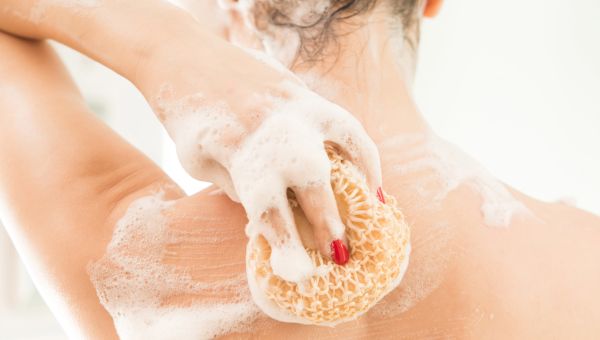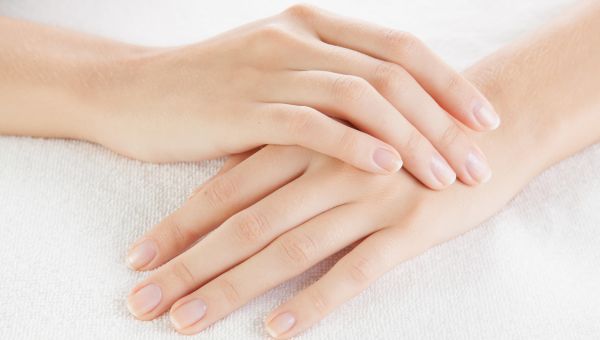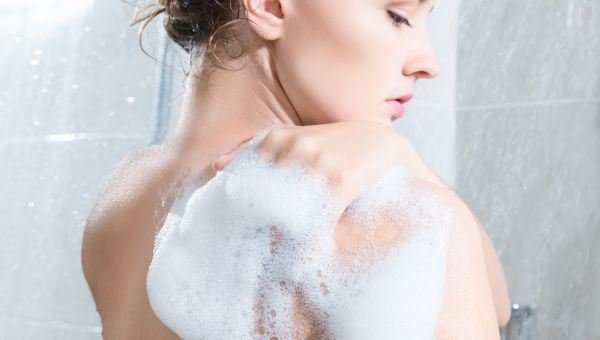How to pamper your most neglected body parts
Avoid breakouts, rough, dry skin and more with these easy skin care tips.

You probably have a morning and nightly skin care routine that includes cleansing and moisturizing your face. And while that’s exactly what you’re supposed to do, you may want to start caring for other sneaky spots, like your nails and back, too.
Neglecting these areas can cause breakouts, nail discoloration and rough, dry skin. Keep your body looking youthful from head to toe with these easy beauty tips.

Fingernails
Whether you’re a regular at the nail salon or not, practicing good nail hygiene can improve the strength and look of your nails.
Your fingernails are made of laminated layers of protein called keratin. If you have strong nails, your nails will likely be smooth and free of grooves and discoloration. But if you notice any bleeding, swelling or pain around your cuticles, or if you notice discoloration or changes in nail shape, it may be time to give them some lovin’.
Here’s how to keep your nails and nailbeds healthy and strong:
- Prevent bacteria growth by keeping them clean, especially the skin underneath the nails
- Always use sharp manicure clippers and trim your nails straight across, then round them slightly at the tips
- Use a daily lotion or oil specifically made to moisturize nails and cuticles (tip: add this step to your nighttime routine)
- Always choose gentle products, like acetone-free formulas, for removing polish
- Never bite or pick your at nails or cuticles
- Avoid pulling hangnails. Snip them off instead.

Back
Did you know that you can get acne on your back? While it may seem weird, “bacne” is a real thing. And flare-ups happen because, let’s face it, your back probably hasn’t been on your skin care radar.
Acne—no matter where it forms—occurs when a pore in your skin gets clogged. Dead skin cells and bacteria can get trapped in the pore, causing inflammation, swelling and even small cysts or nodules.
By taking good care of the skin on your back, you may be able to keep acne at bay. Follow these easy habits:
- When exercising, always wear loose-fitting clothing made of cotton or sweat-wicking material, and change clothes as soon as you finish your workout
- Wash your exercise clothes after use
- Gently cleanse the skin on your back with a soft sponge on a handle that allows you to reach; don’t scrub
- Use gentle, fragrance-free cleansers
- Choose handheld totes and handbags that don’t rub against your back whenever possible. Backpacks are a back-friendly way to carry heavier objects like laptops, but the constant friction can result in bacne.
- Do not—under any circumstances—have someone pop pimples on your back
- Change and wash your bed sheets and pillowcases every week
And if you do get bacne, it’s likely you’ll be able to treat it on your own. Try gently washing your back with over-the-counter benzoyl peroxide cleansers or foams. Slather it on your back using a long-handled sponge (not a loofah, which is too rough). Let it sit for two to five minutes, then rinse. You’ll need the help of a partner for this one: before bed, apply a retinoid cream—a product containing a form of vitamin A—to help break up blackheads and whiteheads and to prevent clogged pores.
If your bacne is painful or doesn’t go away within eight weeks of beginning your at-home treatment plan, see your dermatologist. You may need antibiotics or an oral retinoid.

Elbows
You may not notice how frequently your elbows rub or brush up against practically everything—desks, counters, tables, you name it. Making matters worse, you probably bend your elbows while doing functional tasks, like reaching. All of this constant wear and tear can send your elbows through the wringer, making the skin dry, flaky and even dirty.
Be sure to take care of your elbows just as you would your face, hands and any other part of your body. First, use a gentle exfoliator to remove any dead skin. Apply the exfoliator to your elbows in a circular motion for about 30 seconds, then rinse with warm (not hot) water. Next, rehydrate the area by applying a moisturizer. How often you need to exfoliate depends on the condition of your skin and the type of exfoliator you use. It’s safe to say that the more intense the exfoliator, the less you need to do it.
Always talk to your dermatologist before using exfoliators. If you have sensitive skin, you may want to use a mild product, or even just a light cleanser.
More On


video

slideshow


video


video
